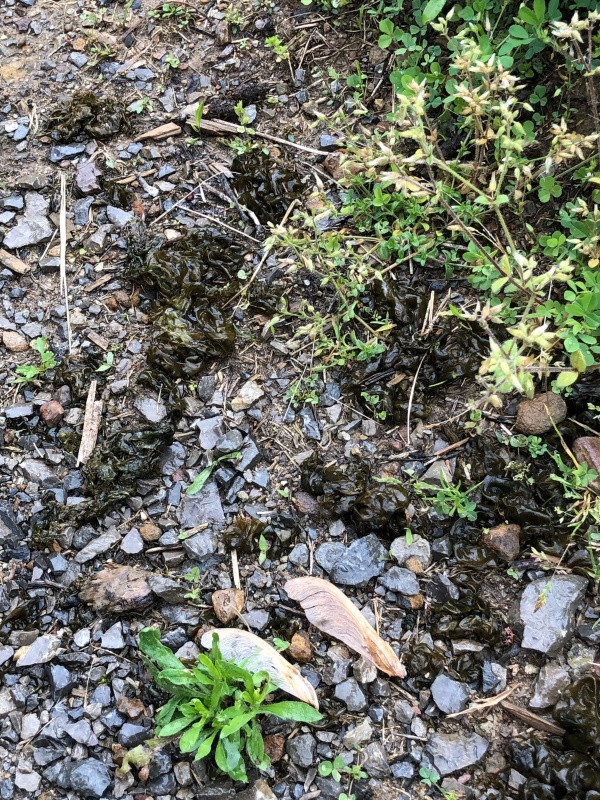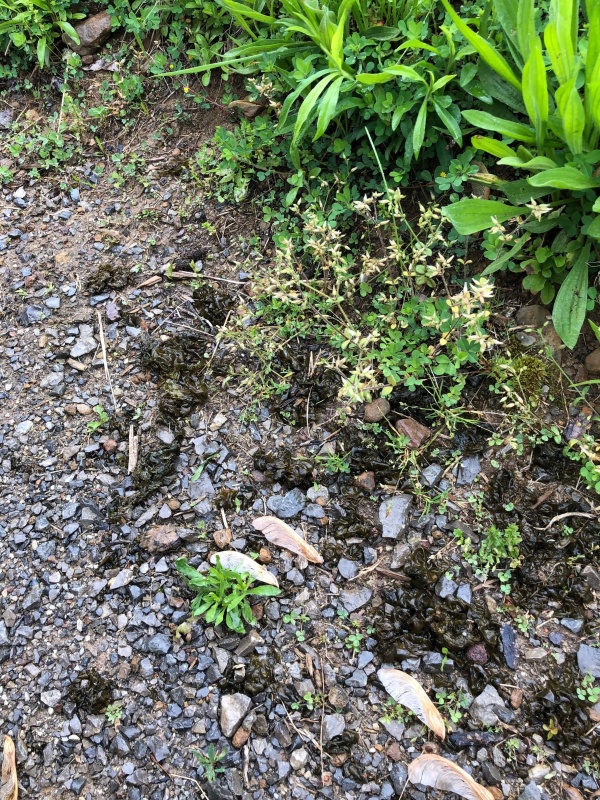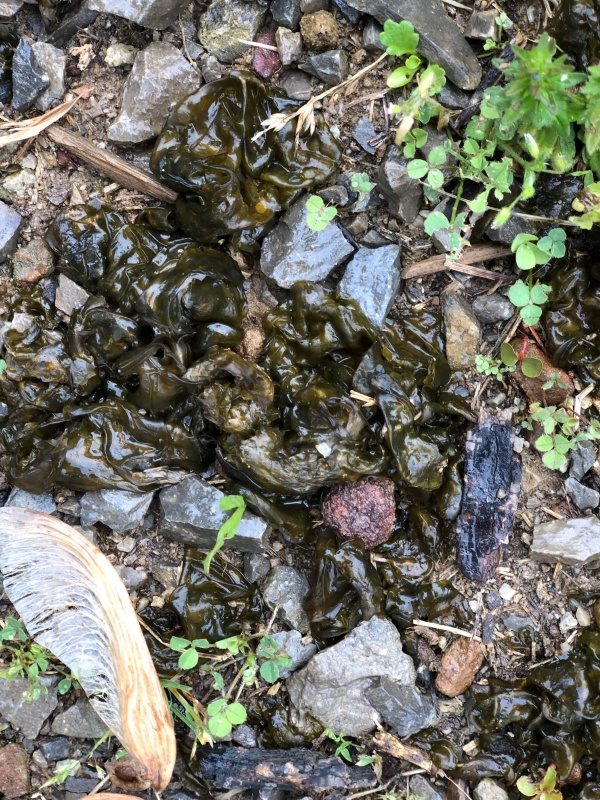
By: Reba Kocher
These pictures look pretty gross and scary don’t they? Well, fear not garden-goers! This is Nostoc Commune, a type of cyanobacteria. Because of its appearance, it is sometimes called star jelly, star-shot, star slime, and witch’s butter. It is actually a non-toxic, gelatinous colony of microscopic bacterial filaments (a filament is a multicellular state of cell chains). It’s actually a super cool and beneficial organism--despite its scary appearance.
N.Commune is bacterial that behaves like a plant. It has been mislabeled as blue-green algae throughout time, but it differs from algae because they are Prokaryotes instead of Eukaryotes like algae and other plants. This means that the N. Commune has single-cell organisms without a nucleus. It is not as cellularly complex as other creatures.N. Commune gets even cooler. It is commonly found in both aquatic and terrestrial habitats and is 2.45 BILLION years old. It is thought to be responsible for the rise of oxygen on Earth! Because it has literally been around since the dawn of time, it is a remarkable organism that can live in a variety of environments. It can withstand extreme temperatures and freezing-thawing cycles. This means that not only can you find star slime in Ohio, but you can also find it in places like Antarctica! N. Commune also is constantly changing appearance, which can lead to misidentifications. In wet weather, it appears to bubble up from the soil, and it is a rubbery yellowish-green to bluish-black color. In dry weather, which is its most common form, it collapses and turns black. It can lay dormant in its dry form for long periods of time before quickly regaining metabolic activity once being rehydrated.
Kickstarting the Earth’s oxygen isn’t the only thing this little bacteria cluster can do, it fixes atmospheric nitrogen. As you might know, nitrogen is super important for plant growth. Nitrogen is the building block for amino acids, proteins, and DNA. For plants, nitrogen is the most important for the creation of chlorophyll, which is needed to photosynthesize their food. N. Commune, as a nitrogen fixer, is able to provide important nutrients and nitrogen to plants. In the human world, N.Commune has been used for century in the East, like China, for folk medicine. It is believed to have anti-inflammatory and anti-oxidative properties. In Western medicine, scientists have found evidence that it might also have anti-carcinogenic properties as well. They are looking to find more medicinal uses for this amazing bacteria from cancer treatments to cholesterol medication. If you see a scary looking gelatinous mass the next time you’re walking through our woodlands, remember this blog post and how awesome this bacteria is! Try not to step on it so it can help all of our plants thrive!


References & Further Reading
https://bygl.osu.edu/node/1258
https://microbewiki.kenyon.edu/index.php/Nostoc
https://www.ncbi.nlm.nih.gov/pmc/articles/PMC5865699/
An article about N. Commune in Antarctica! https://www.landcareresearch.co.nz/science/soils-and-landscapes/antarctic-soils/microbial-life/terrestrial-cyanobacteria-in-antarctica
